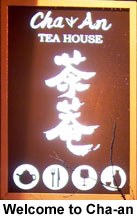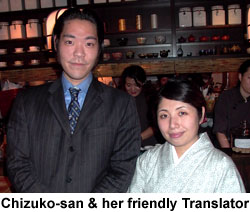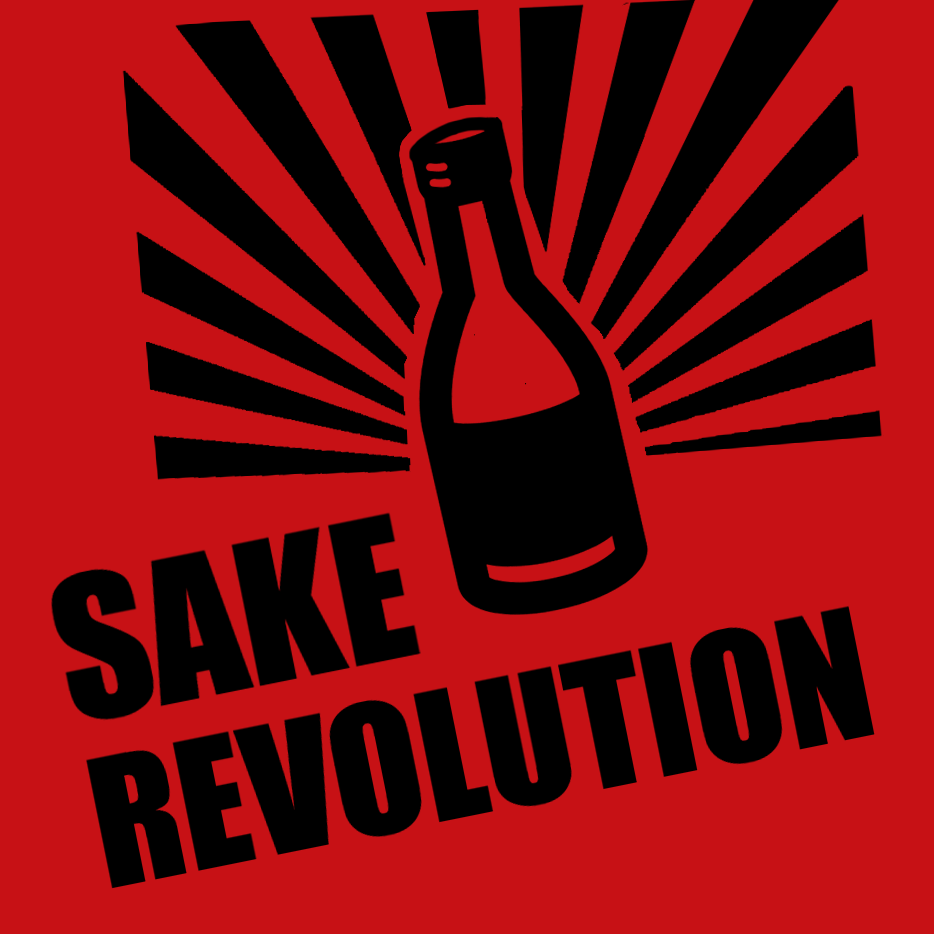The Wrath of “Kan”
 One of the really surprising things about the study of Sake is that once you think you know something, you find out, you really know nothing at all. Yes, Sake can humble you in this way. Whatever you’ve learned, there is always more to explore. “Kan Sake” or “warmed sake” is one of these areas. Conventional wisdom says that only cheap, poorly produced sake is heated as warming masks the uneven flavors. Usually it’s piping hot and tastes like jetfuel… Right? Anyone who as seen Star Trek II knows how Captain Kirk feels about it.
One of the really surprising things about the study of Sake is that once you think you know something, you find out, you really know nothing at all. Yes, Sake can humble you in this way. Whatever you’ve learned, there is always more to explore. “Kan Sake” or “warmed sake” is one of these areas. Conventional wisdom says that only cheap, poorly produced sake is heated as warming masks the uneven flavors. Usually it’s piping hot and tastes like jetfuel… Right? Anyone who as seen Star Trek II knows how Captain Kirk feels about it.
Well, as with all things sake it’s just not that simple. Kan Sake is a vast subject but I made some inroads into this world last week when I attended another Sake Seminar at Cha-an Tea House.
Again, this lesson on warm sake was facilitated by our friend Chizuko-san, sake sommelier at the amazing Sakagura restaurant and Sake Bar. Unfortunately, the November weather was not coordinating with the theme.  It was a somewhat warmer and humid evening in NY and I wasn’t looking forward to 5 courses of steaming hot sake. My fears however were completely unfounded.
It was a somewhat warmer and humid evening in NY and I wasn’t looking forward to 5 courses of steaming hot sake. My fears however were completely unfounded.
I found the evening too be delicious and I found myself to be a new and unlikely fan of heated nihonshu! How did this happen? Well, The evening was artfully arranged by Chizuko-san to showcase the very best of what heated sake is all about. Simply stated, it was a revelation.
Let’s review the individual Sakes presented and how they each stood up to warming.
 We started with a real top notch pick right out of the gate. It was Yuki No Bosha Daiginjo (ALC 15%, SMV +2, Acidity 1.5, Seimaibuai 35%, Akita Prefecture.)
We started with a real top notch pick right out of the gate. It was Yuki No Bosha Daiginjo (ALC 15%, SMV +2, Acidity 1.5, Seimaibuai 35%, Akita Prefecture.)
Chizuko-san described the sweetness fo the Yuki No Bosha Daiginjo as having a sweetness suggestive of warm milk with honey – and I couldn’t agree more. The warmed honey flavor really came through. It was delicious. Another important note about this sake is it’s richness. The rich deep flavor allows this sake’s rice flavor to come through despite the gentle warming.
Please also take note, this is a Daiginjo!! Prevailing advice is to never, ever, ever heat a delicate daiginjo, but in this case – it really works. delightful – and how often do you get a heated Daiginjo? try it!
 The next sake was a surprise! We were honored to have Mr. Yamamoto from the Yamamoto sake brewery make an unannounced visit and share a real treat with us.
The next sake was a surprise! We were honored to have Mr. Yamamoto from the Yamamoto sake brewery make an unannounced visit and share a real treat with us.
We had the pleasure of trying the Matsu No Midori Junmai Daiginjo (ALC 15.8%, SMV +5, Acidity 1.3, Kyoto Prefecture). This sake was very enjoyable, indeed. To me, it had a somewhat deeper flavor than the previous Daiginjo. The higher SMV also indicated to me that Matsu No Midori was slightly drier. At this point I was starting to feel spoiled drinking all this heated Daiginjo sake. I mean, usually, it’s a no-no, but all bets were off for tonight.
 By this point I was feeling really good and was ready for our Third sake. We were treated to Kamoizumi Shusen Junmai Ginjo (“Three Dots”, ALC 16%, SMV +1, Acidity 1.6 Seimaibuai 58%, Hiroshima Prefecture)
By this point I was feeling really good and was ready for our Third sake. We were treated to Kamoizumi Shusen Junmai Ginjo (“Three Dots”, ALC 16%, SMV +1, Acidity 1.6 Seimaibuai 58%, Hiroshima Prefecture)
I have heard before that “Three Dots” is a good sake for warming, and now I understand why. For me, this sake was tinged slightly yellow, but tasted nice and smooth with a distinct earthiness that lent itself well to heating. That earthiness was a woody mushroomy flavor that tasted so cozy.
 An important note about this brew is the lack of familiar floral tones you might know from other junmai Ginjos. Chizuko-san told us, this sake was created by the brewery to have that “back to nature” quality. It may not be everyone’s taste, but I sure loved it. Like a camping trip in a glass!
An important note about this brew is the lack of familiar floral tones you might know from other junmai Ginjos. Chizuko-san told us, this sake was created by the brewery to have that “back to nature” quality. It may not be everyone’s taste, but I sure loved it. Like a camping trip in a glass!
The fourth sake was Dewazakura Izumijudan Ginjo (“Tenth Degree” ALC 17.5% SMV +12, Acidity 1.4, Seimaibuai 50%, Yamagata Prefecture)
 Anyone who reads my blog regularly knows I’m a huge fan of Yamagata sake after I went to a special tasting that focused on that region. Dewazakura is perhaps the most well known brewery from this region. Above all, this Izumijudan Ginjo is a really dry sake that keeps it’s distinct try gin-like character even through a gentle heating.
Anyone who reads my blog regularly knows I’m a huge fan of Yamagata sake after I went to a special tasting that focused on that region. Dewazakura is perhaps the most well known brewery from this region. Above all, this Izumijudan Ginjo is a really dry sake that keeps it’s distinct try gin-like character even through a gentle heating.
 Onward and upward! The fifth sake was the The Masumi Yamahai Ginjo (“Winter Yamahai”, ALC 15%, SMV +2, Acidity 1.9, Seimaibuai 55%, Nagano Prefecture). We learned that this sake was crafted especially to be heated. I found it to have a pure, rich yet smooth flavor.
Onward and upward! The fifth sake was the The Masumi Yamahai Ginjo (“Winter Yamahai”, ALC 15%, SMV +2, Acidity 1.9, Seimaibuai 55%, Nagano Prefecture). We learned that this sake was crafted especially to be heated. I found it to have a pure, rich yet smooth flavor.
I didn’t detect much of a nose at all and the tail I would describe as “barely there”. But while on that palate, this Yamahai is a full-bodied-people-pleaser.
Our second to last sake was the delicious Akitabare Koshiki Junzukuri Junmai (“Northern Skies”, ALC 14.5%, SMV +1.5, Acidity 1.55, Seimaibuai 60%, Akita Prefecture). The Akitabare we tried also lacked much of an aroma, but the flavor was rich and bold.  This junmai was served headed to 122°F. It’s interesting to note that this sake is that the rice is grown locally and the yeast is produced in the brewery itself which gives this sake a special Terroir.
This junmai was served headed to 122°F. It’s interesting to note that this sake is that the rice is grown locally and the yeast is produced in the brewery itself which gives this sake a special Terroir.
The final sake was one I was expecting and happy to see at a “warmed sake” evening. Last but not least we enjoyed Shichi Hon Yari Junmai (“The Seven Spearsmen” ALC 15.5%, SMV +4, Acidity 1.5, Seimaibuai 60%, Shiga Prefecture)
This is a delightful Junmai to enjoy everyday with no frills or fancy affect. It is one of the few sakes that can be heated to a higher temperature – up to 140°F and still taste great. The light dryness of the sake evokes it’s aim to be a simple treat. The Tomita Sake brewery is well known and it’s history dates back to the time of the Samurai. When heated the flavor greatly expands and warms you really from the inside out. Warning: this sake can be highly addictive!
Last but not least, Chizuko-san gave us a very handy temperature chart for heated and chilled sake which you can find below. as you can see there are many gradations of sake based on temperature. Next time you order your sake and the server asks “hot or cold?” You can answer you’d like your sake “Nuru-kan”. You’ll know for sure if they are hot…. or not. Enjoy
| Sake Naming and Temperature Chart | |||
| Japanese Name | Celsius | Fahrenheit | English Name |
| Tobikirikan | 55° C | 133° F | Very Hot Sake |
| Atsukan | 50° C | 122° F | Hot Sake |
| Jokan | 45° C | 113° F | Slightly Hot Sake |
| Nurukan | 40° C | 104° F | Warm Sake |
| Hitohadakan | 35° C | 95° F | Body Temperature |
| Hinatakan | 30° C | 86° F | Sunbathing in Summer |
| Suzubie | 15° C | 59° F | Cool autumn Breeze |
| Hanabie | 10° C | 51° F | Blooming Spring Flower |
| Yukibie | 5° C | 41° F | Falling Winter Snow |


